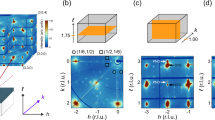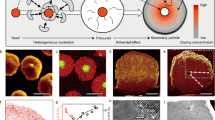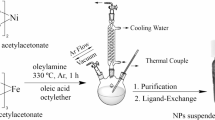Abstract
THIS note describes some rather unexpected facts observed when nickel and gold are investigated at high dispersion with X-rays. In these experiments the distance between the film and the specimen is either 20 cm. or 30 cm. The primary X-rays after passing through a pin-hole of about ½ mm. diameter reach the specimen, a flat disk of approximately 1–1·5 sq. cm. surface, and are scattered back to the photographic film. The β1 line of iron (wave-length 1.75301 A.) gives with the (400) crystal plane of nickel a glancing angle of 85½° at room temperature. A lattice change of 1/1,000 produces a shift of more than 7 mm. of the line on the film, and since the position of a sharply defined line can easily be measured to 1/10 of a millimeter, lattice changes of the order of 10-5 are observable. No such reflexions are ever obtained when the material is examined in bulk even with the purest and most carefully annealed substances. This is well known. With annealed powders or filings it is different, as is shown for example in the investigation of Owen and Yates1 on pure nickel.
Similar content being viewed by others
Article PDF
References
Phil. Mag., 21, 809 (1936).
Author information
Authors and Affiliations
Rights and permissions
About this article
Cite this article
MÜLLER, A. Structure of Metals. Nature 140, 1011–1012 (1937). https://doi.org/10.1038/1401011a0
Issue date:
DOI: https://doi.org/10.1038/1401011a0
This article is cited by
-
Untersuchungen über Keimverminderung und chemische Umsetzungen in den Sandfiltern von Wassergewinnungsanlagen
Zeitschrift für Hygiene und Infektionskrankheiten (1939)



